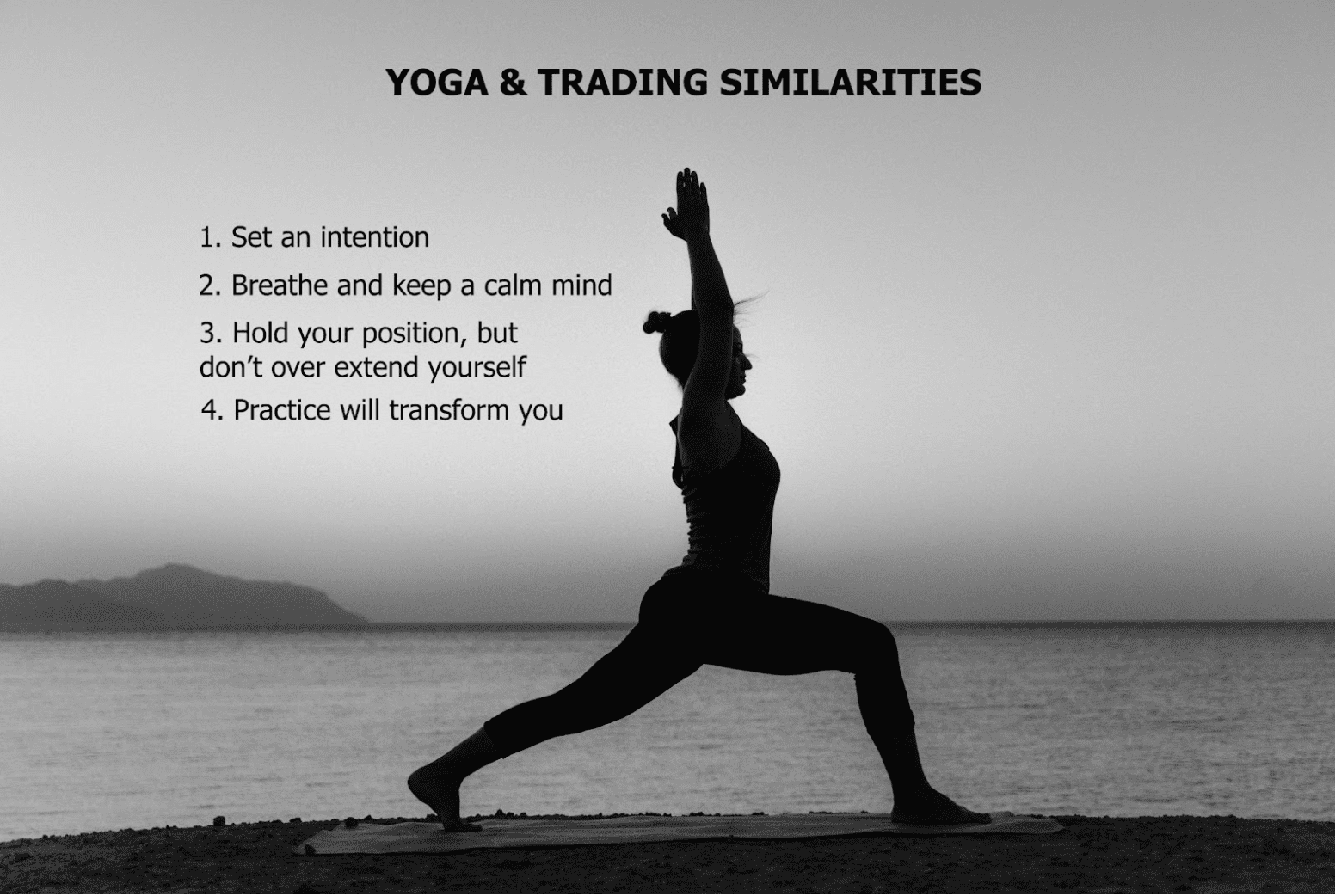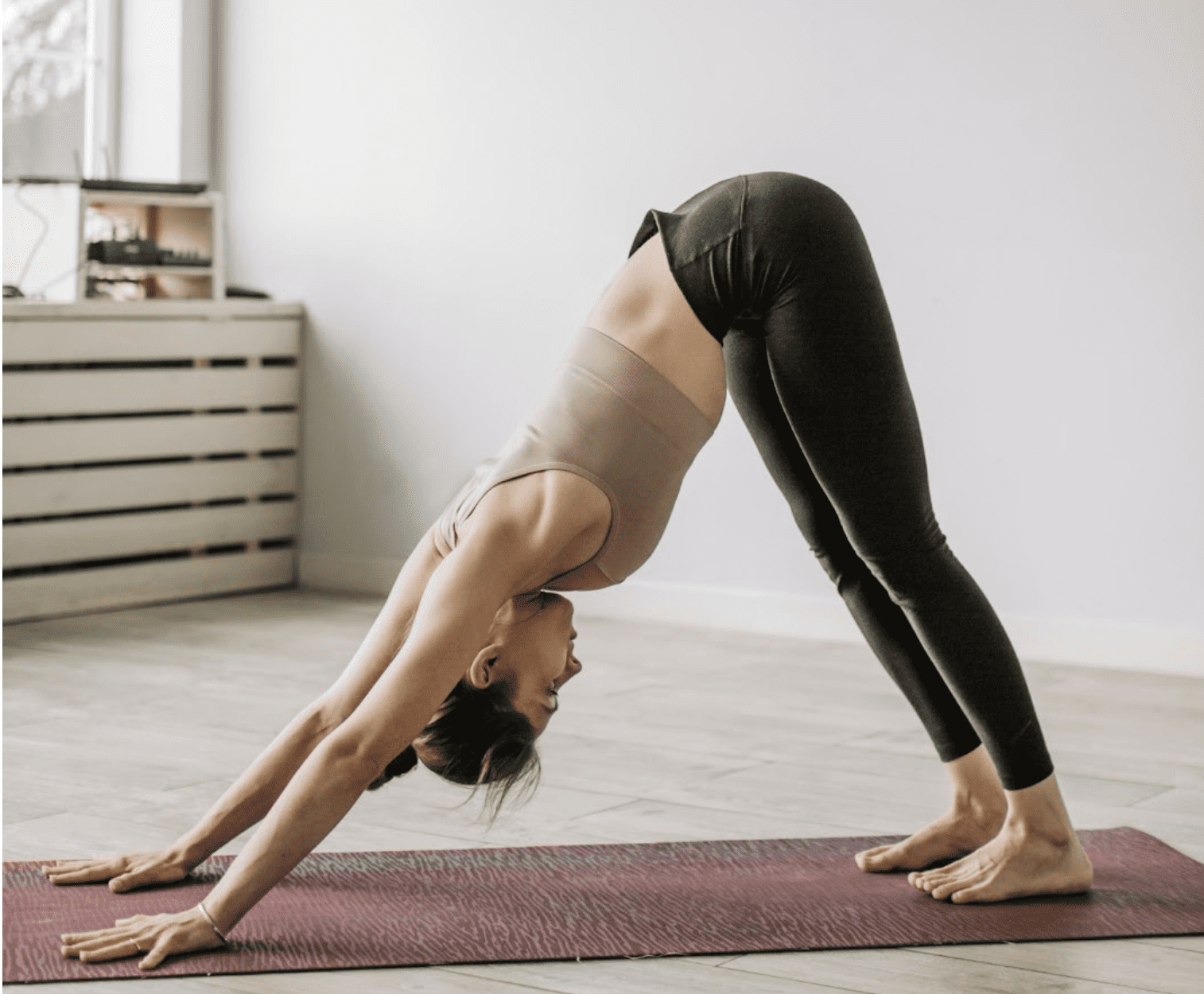Yoga & Trading
Yoga & Trading
By Katie Gomez
Yoga and investing benefit your health in different ways. While practicing yoga can help your mental and physical health, investing can benefit your financial health. Practicing yoga invites a healthier future for the mind and body, and investing sets you up for a more prosperous financial future.
Although the practice of yoga and investing are highly comparable, how we go about them and the tools and mindsets they require are shockingly similar. Investing is known to be complex and requires diligence and patience from those who practice it, but there are various avenues you can take when it comes to investing. However, stock trading can be a cause of stress; with the constant fluctuation of the market and the quick, impulsive decisions that result from it, stock trading is essentially an emotional rollercoaster. So, what does trading have in common with yoga? Surprisingly, a lot.
I compared stock trading/investing to other recreational activities such as roulette, blackjack, and other sports in previous articles. However, as a yoga teacher and active investor, I feel more attached to this article by experiencing the overlap. I have seen similarities and learned to apply similar principles to both practices. In this article, I will review five ways I see yoga and stock trading are the same.

1.) Finding balance. In yoga, classes are built off the idea of yin and yang, with postures that embody a balance of strength and challenge with rest and recovery; this balance creates the most benefits. In trading, we balance our portfolios with higher and lower-risk investments. If your goal is to make more money, but all of your investments are low-risk stocks, that is the equivalent of taking a yin-recovery yoga class with the expectation of getting a good workout. The intention behind your practice must be well-balanced, with a good blend of realism. Hence, it’s sustainable and higher risk/volatility to challenge your investment, just as a good yoga class challenges your endurance.
2.) Dealing with the 3 C’s. Criticism, comparison, and complaining are familiar struggles for humans (traders and yogis alike). The 3 C’s are everyday struggles for humans (traders and yogis alike). They usually go hand in hand in negatively influencing your craft, whether trading or yoga. Complaining about where we are in our journey opens the door to a downward spiral, planting seeds of doubt and wondering when we will succeed.
Complaining is prevalent in trading and yoga because both paths require patience, practice, and trust in long-term fulfillment—delayed gratification is your companion.
Criticizing your decisions or how you appear does not serve your success at all, yet we all do it because it is far easier to tear ourselves down than to build ourselves up. As a result, we jump at opportunities to criticize ourselves, whether that looks like selling stock too soon or falling out of a posture. If we became our cheerleaders when we make mistakes, switching our mindset to growth and opportunity, criticism would be forced to play a lesser role in our lives.
Comparing yourself to others. Whether it’s yoga or trading, we constantly compare our journeys and timelines to those around us. Nevertheless, only one kind of comparison matters and is healthy: comparing the person you are today to the person you were yesterday. Nothing else matters as long as you remain focused on your progress. You can transform habits of comparison into personal reflection, which is more fulfilling and encouraging. If you cannot shut off the envy you feel seeing others, use the tool offered in yoga. In the studio, teachers encourage students to turn jealousy or resentment from comparison into motivation to get better.
Whether it’s a multimillionaire investor you see on social media or a colleague making a brilliant trade you hadn’t thought of, you can choose to turn that envy into inspiration to keep working toward your goals and turn that resentment into a lesson for your next trade, to conduct more diligent research. There is always a way to shift the negative, detrimental emotions and traits of your experience into something more positive and productive for your journey.
3.) Getting outside your comfort zone. It is not wise as a trader or yogi to play it safe—avoid pigeonholing your practice to one set of ways. Once the initial shock of trying something new is over, the body and mind rush to a place of comfort. In yoga, that comfort might look like sticking to the same teacher, class, or studio because that is where you feel safe. While any practice is better than no practice at all, this limits your ability to learn and grow your training and experience new postures, meet new people, and learn new lessons on your mat.
In trading, this comfort zone might look like investing in a certain number of stocks you feel comfortable with. However, this holds you back from diversifying your portfolio and finding more consistent long-term success as a trader. Additionally, sticking with stocks as your sole investment extinguishes the opportunity to grow as a trader, even if that looks scary, uncomfortable, and vulnerable to failure; the only way through it is through it. The only way to experience the thrill of achieving a new posture is to try them. Practice different kinds of yoga.

4.) Learning how to hold a position but not force it. This comparison was too funny to not mention how yoga positions and financial situations can cause equal amounts of stress and discomfort. Both financial stock positions and physical yoga posture positions can send the body into a state of fight or flight. In yoga, students are taught to hold the position even when the body may scream to leave it; to achieve the peace the position brings, they must first be willing to ride out the uncomfortable sensations.
Similarly, holding a position in stock trading can sometimes trigger the same bodily sensations, a surge of resistance and a desire to get out of dodge because both positions trigger the same feelings of flight or flight in the body. The emotions that come up in trading are ones we must let pass to experience joy and peace in the form of financial reward.
5.) Practice, practice, practice. In the yoga community, we have to replace the usual “practice makes perfect” with “practice makes permanent” because it is impossible to reach perfection. Even the most experienced, impressive yogi or the most successful trader in the world could be better. However, what practice does is engrain permanent habits that you will continue over and over again, so you must ensure the habits you practice are the ones that will aid in your successes rather than your failures. For yogis, that practice might look like increased studio time, alignment coaching with teachers after class or even private class sessions. For traders, the practice looks like clocking in more hours in the simulator with virtual money, joining trading webinars and chat rooms, or prioritizing time to conduct more extensive research.
6.) The importance of the breath.
I will leave you with one of the essential tools for trading and practicing yoga, remember to breathe. In yoga, students are often reminded of Eckart Tole’s adage, “this too shall pass,” teaching them to breathe through uncomfortable times. Similarly, in the stock market, traders are reminded by the constant market fluctuations that what goes up must come down—including crashes—everything is part of the market cycle.
Yoga begins and ends with the breath, as should your trading practice, to calm the mind and avoid letting your emotions get the best of you. When the breath is still, the mind is clear, no matter what environment you find yourself in. So as you leave this page and return to the stress of the market, erratic thoughts will imminently arise. However, when this happens, remind yourself that no bear market, recession, depression, or any other crisis lasts forever. So remember to stay patient and breathe, and you’ll find yourself with the mindfulness of a yogi in no time.
